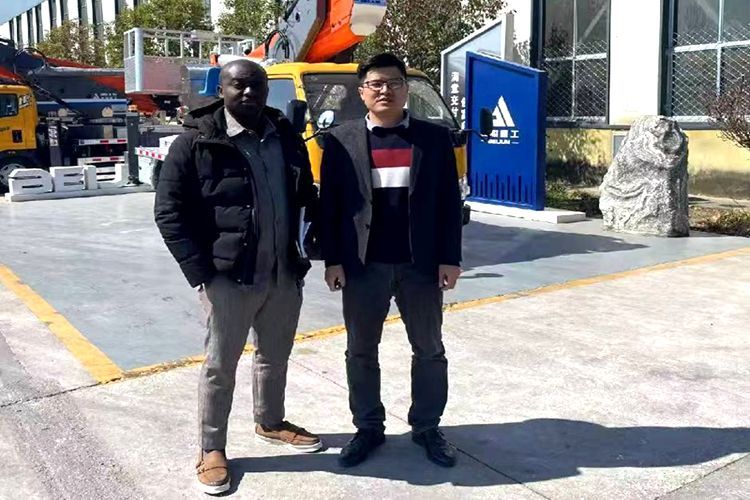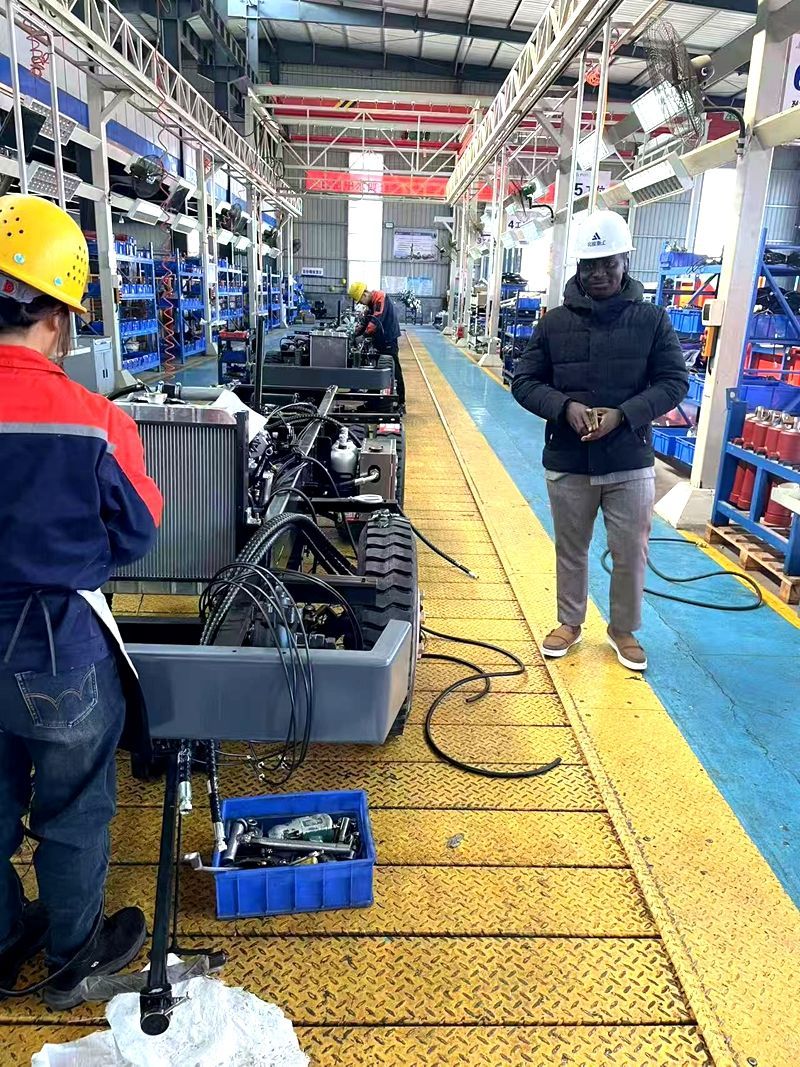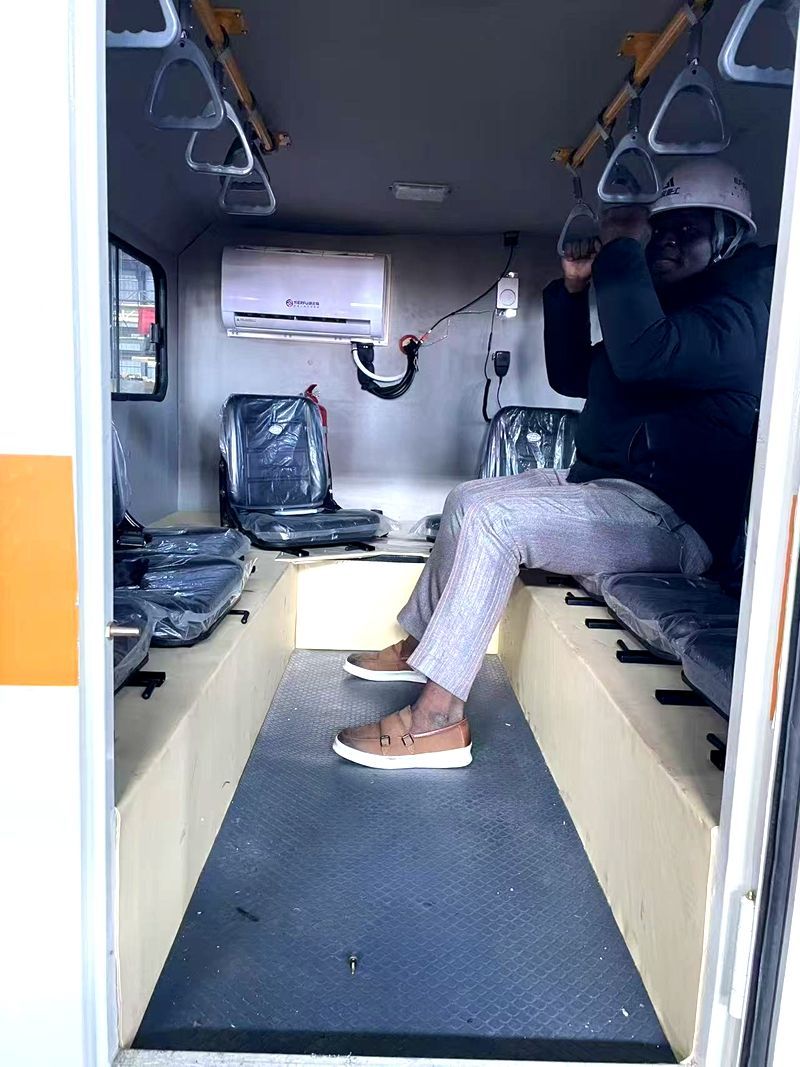Ghanaian Mining Client Imma Visits Shandong Beijun: Decoding Core Mining Vehicle Technologies, Exploring New Horizons for Cross-Border Cooperation
On July 13, 2025, Imma, a marketing consultant from a Ghanaian mining enterprise, visited Shandong Beijun Machinery Industry Co., Ltd.(hereinafter referred to as "Shandong Beijun"). The go to targeted on an in-depth inspection of the technical capabilities, customization expertise, and world provider structures of mining transport vehicles—including underground dump vehicles and underground mining utility vehicles, which are imperative for Ghana’s developing underground mining sector. From watching tools in the manufacturing unit region to exploring manufacturing line approaches and experiencing automobile cabs firsthand, Imma, with a "professional viewpoint blended with realistic needs," engaged in specific discussions with the Beijun crew on ache factors in Ghanaian mining areas, laying the groundwork for plausible cross-border cooperation.
I. First Glimpse of the Factory: Capturing "Ghana Adaptability" in the Product Portfolio
Upon coming into Shandong Beijun’s manufacturing base, Imma’s interest used to be right away drawn to the numerous product portfolio, which consists of wheeled mining dump trucks, underground dump trucks, extraordinary engineering equipment, and underground mining utility vehicles. As a key participant in Ghana’s mining industry, Imma confirmed specific pastime in long lasting underground mining automobiles for Ghana, bending down to check out a personalized underground dump truck’s bolstered cargo box.
“Ghana’s underground mines face special challenges—narrow tunnels, excessive humidity, and universal ore transportation,” he noted. “Can these underground dump trucks maintain efficiency in such conditions?”
The Beijun team responded with targeted data: “Our underground dump trucks undergo 1,200-hour continuous operation tests in simulated Ghanaian mine environments. The cold-formed steel frame, which passed a 500-kilometer bumpy test (deformation ≤0.3mm), and composite wear-resistant panels (extending service life by 40%) make them ideal for your needs.” A simulation video of underground mining utility vehicles navigating Ghana’s tight mine shafts further alleviated his concerns.
II. Exploring the Workshop: Imma’s Focus on "Craftsmanship Details" Through the Lens
Stepping into the core production workshop, Imma headed straight for the assembly area of underground mining utility vehicles, pulling out his phone to document key processes: sealed wire harnesses for dust resistance, corrosion-resistant hydraulic pipelines, and precision torque markings on Hande axles—critical features for low-maintenance underground dump trucks.
When examining the “300×80×(8+8+8) cold-formed steel frame” used in both surface and underground models, he pointed to a welding joint and asked: “Ghana’s dry season Temperature difference reaches30℃, while underground mines stay humid year-round. Will this welding hold up?”
Technicians presented “stress relief heat treatment reports” and “high-low temperature cycle test data”: after simulations at -20℃ to 50℃ (mimicking surface conditions) and 95% humidity tests (for underground environments), welds remained intact. “These details are why your underground mining utility vehicles stand out,” Imma noted, saving photos of the reports.
III. Cab Experience: Imma Tests the "Human-Centric Design" Across Vehicle Lines
In the experience area, Imma first tested a multi-functional personnel carrier, then moved to an underground mining utility vehicle’s cab—both designed with Ghanaian miners in mind.
“Underground mines in Ghana can be 500 meters deep, so operator comfort directly impacts productivity,” he observed, noting the 15cm knee room (even with toolkits) and African body-type-adapted seats. Safety features like 3cm anti-slip armrests and quick-clean rubber mats (vital for red soil) mirrored those in the underground dump trucks.
“Old underground transport vehicles in Ghana are cramped and unreliable,” Imma said. “Beijun’s focus on ergonomics—whether for surface carriers or underground mining utility vehicles—shows you understand our needs.”
IV. At the Negotiation Table: Imma’s "Customization List for Ghanaian Mining Areas"
Post-inspection, discussions centered on “Ghana-specific solutions,” with Imma highlighting underground operations:
Terrain Adaptation: “Reinforce underground dump truck tires for sharp rock debris, and optimize underground mining utility vehicle suspension for uneven tunnel floors.”
Ease of Maintenance: “As low-maintenance underground dump trucks are critical, ensure 7-day delivery of spare parts like filters and hydraulic hoses via Tema Port.”
Cost Control: “Offer modular upgrades—like enhanced ventilation for underground cabs—to balance performance and budget.”
Beijun’s team confirmed: “We can deliver test units of both underground dump trucks and utility vehicles within 60 days, tailored to your mines.” Imma smiled: “This precision makes collaboration inevitable.”
Conclusion: From "Inspection" to "Takeoff," Beijun Targets Ghana’s Underground Mining Market
Imma’s visit underscored Shandong Beijun’s readiness to supply durable underground mining vehicles for Ghana. By integrating underground dump trucks and underground mining utility vehicles into its portfolio—paired with localized service—Beijun is poised to become a key partner in Ghana’s mining growth. Soon, the hum of Beijun’s vehicles may resonate through both surface quarries and deep underground tunnels across Ghana.



